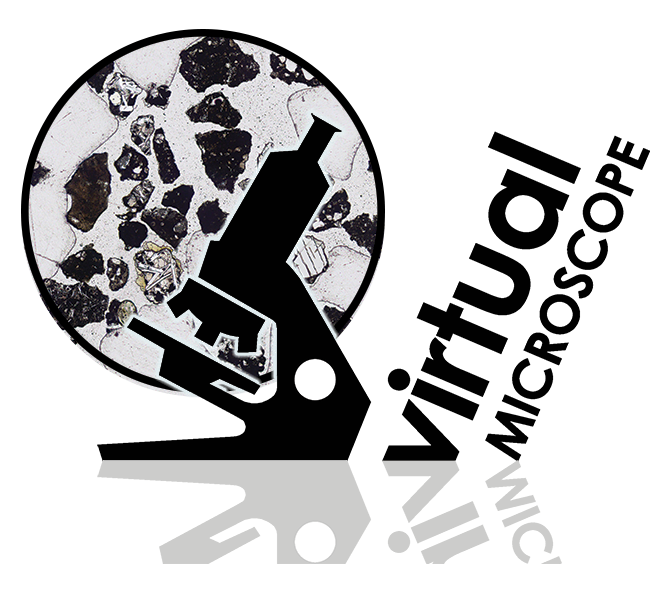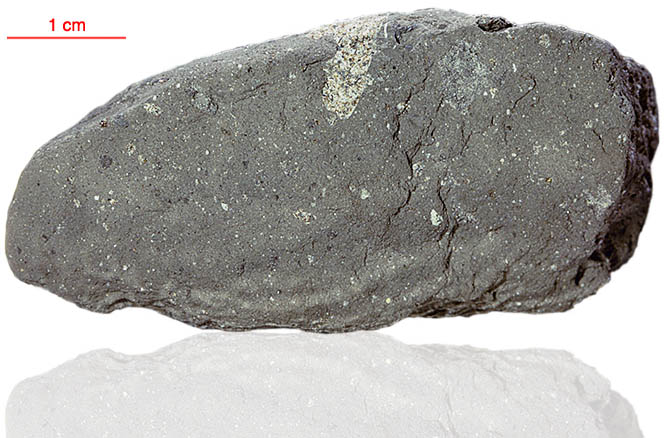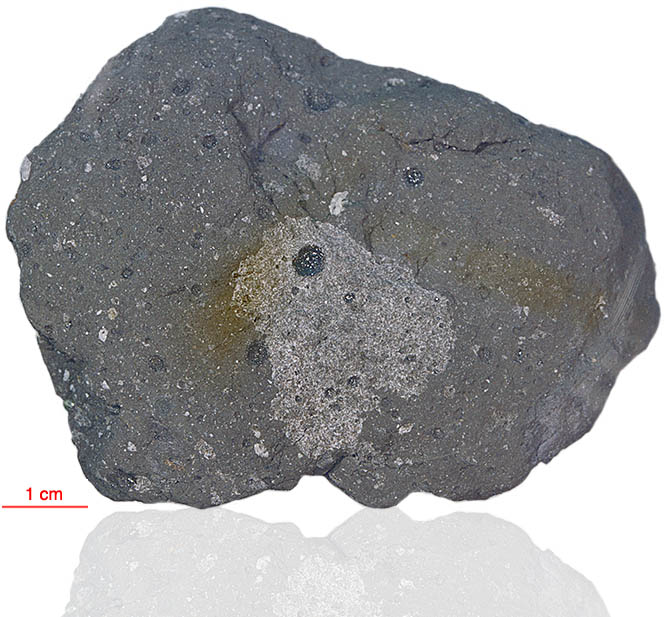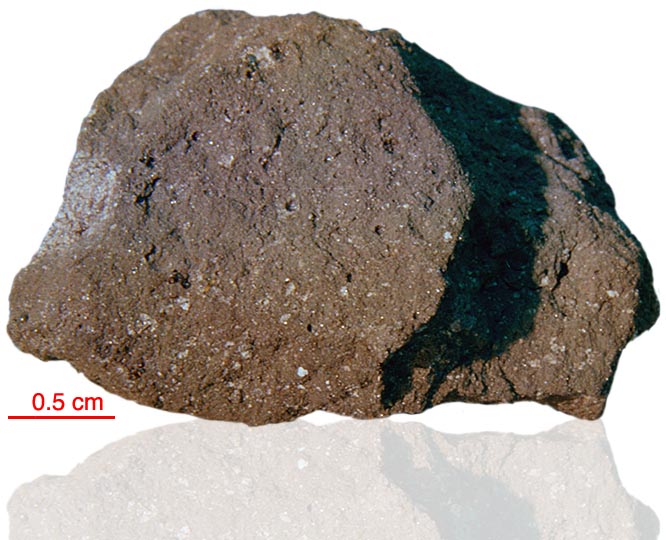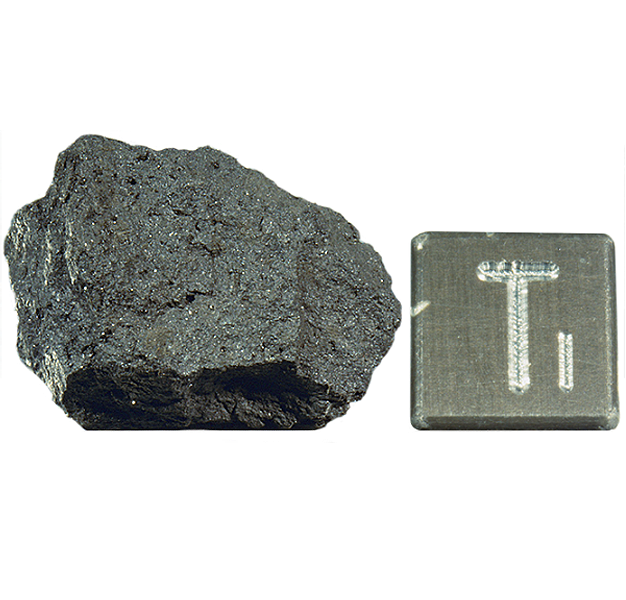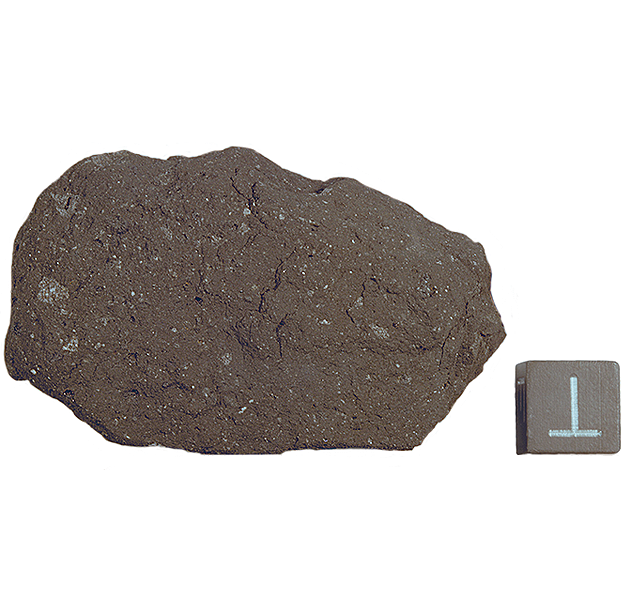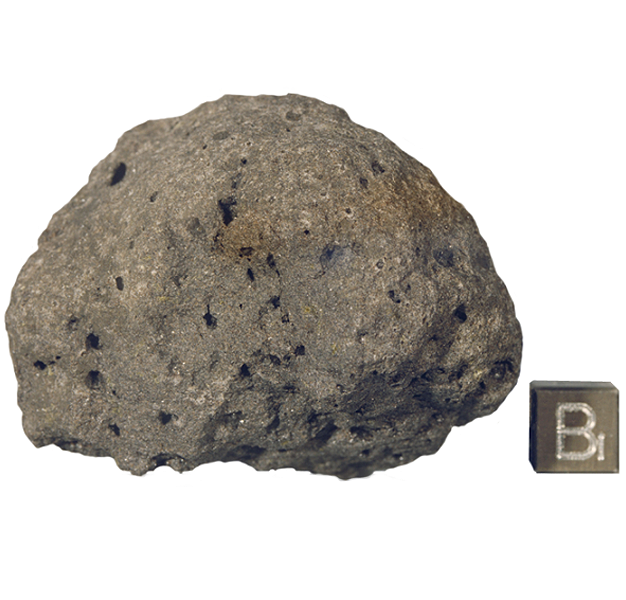
Fact sheet
Sample 10045 is a fine-grained, vuggy to vesicular, ophitic olivine basalt. It crystallised 3.8 billion years ago and has been exposed at the surface for around 110 million years.
The thin section of this sample predominantly consists of equant ilmenite crystals and laths of plagioclase feldspar enclosed by pyroxene. Olivine is a minor constituent (3%), that is often enclosed by pyroxene. Chromite, cristobalite, apatite, K-feldspar, troilite and metallic iron are rare but have been reported in this sample. The very rare mineral species armalcolite, named after the three astronauts who were involved in its transfer to Earth, is also present in 10045, but its very difficult to see. It is reported as an exsolution product within ilmenite grains.
Further details of this and other Apollo samples are here: http://curator.jsc.nasa.gov/lunar/
The Apollo 11 samples create an iconic collection since they were the first rocks collected by humankind that were returned to Earth from another solar system body. The Apollo 11 team collected and returned 22 kg of rock and soil samples.
Apollo 11 launched from Cape Kennedy on 16 July 1969. An estimated 530 million people watched Armstrong's televised image and heard his voice describe the event as he took "...one small step for a man, one giant leap for mankind" on 20 July 1969.

